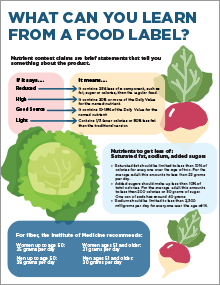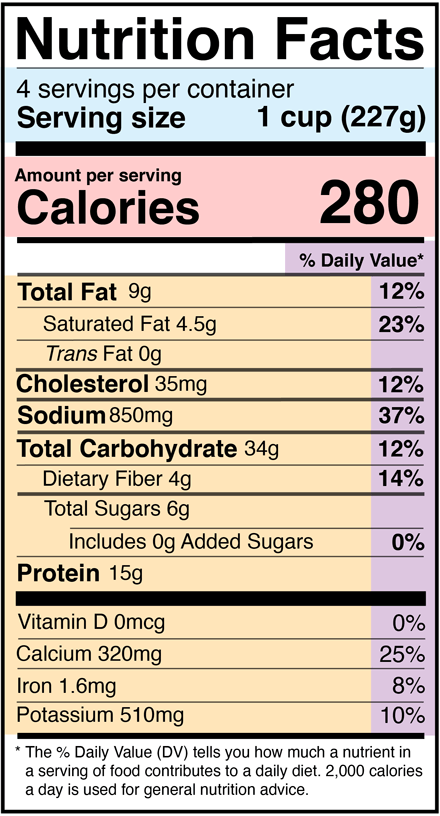Editor’s note
You can read this publication on this page, download the PDF, or order printed copies.
See the companion publication N1009, Understanding Food Labels Poster.

This handout explains the information shared on a food label. It discusses nutrients, percent daily value, serving information, and the ingredients list.
The printed version is a two-page 8.5-by-11 inch handout.
See handout content below.
What Can You Learn From a Food Label?
Nutrient content claims are brief statements that tell you something about the product
| If it says … | It means … |
|---|---|
| Reduced | It contains 25% less of a component, such as fat, sugar or calories, than the regular food. |
| High | It contains 20% or more of the Daily Value for the named nutrient. |
| Good Source | It contains 10–19% of the Daily Value for the named nutrient. |
| Light | Contains one-third fewer calories or 50% less fat than the traditional version. |
Nutrients to get less of: Saturated fat, sodium, added sugars
- Saturated fat should be limited to less than 10% of calories for everyone over the age of two. For the average adult this amounts to less than 22 grams per day.
- Added sugars should make up less than 10% of total calories. For the average adult this amounts to less than 200 calories or 50 grams of sugar. One can of soda has around 40 grams
- Sodium should be limited to less than 2,300 milligrams per day for everyone over the age of 14.
For fiber, the Institute of Medicine recommends
- Women up to age 50: 25 grams per day
- Men up to age 50: 38 grams per day
- Women ages 51 and older: 21 grams per day
- Men ages 51 and older: 30 grams per day

Serving information
Nutrition information is for the amount listed as one serving. If you eat two servings of this food, all the information below should be doubled.
Quick guide to percent daily value
- Tells the percentage each nutrient contributes toward the daily need for an average adult.
- If the % daily value is 5% or less, it is low in that nutrient.
- If the % daily value is 20% or more, it is high in that nutrient.
Nutrients
These four nutrients — vitamin D, calcium, iron and potassium — are required to be listed because many people don’t get enough. Make it a goal to get 100% Daily Value of these nutrients and dietary fiber.
Nutrients to get more of:
- Fiber
- Vitamin C
- Calcium
- Iron
- Potassium
Ingredients
All ingredients must be listed in order by weight. The ingredient that weighs the most is listed first.